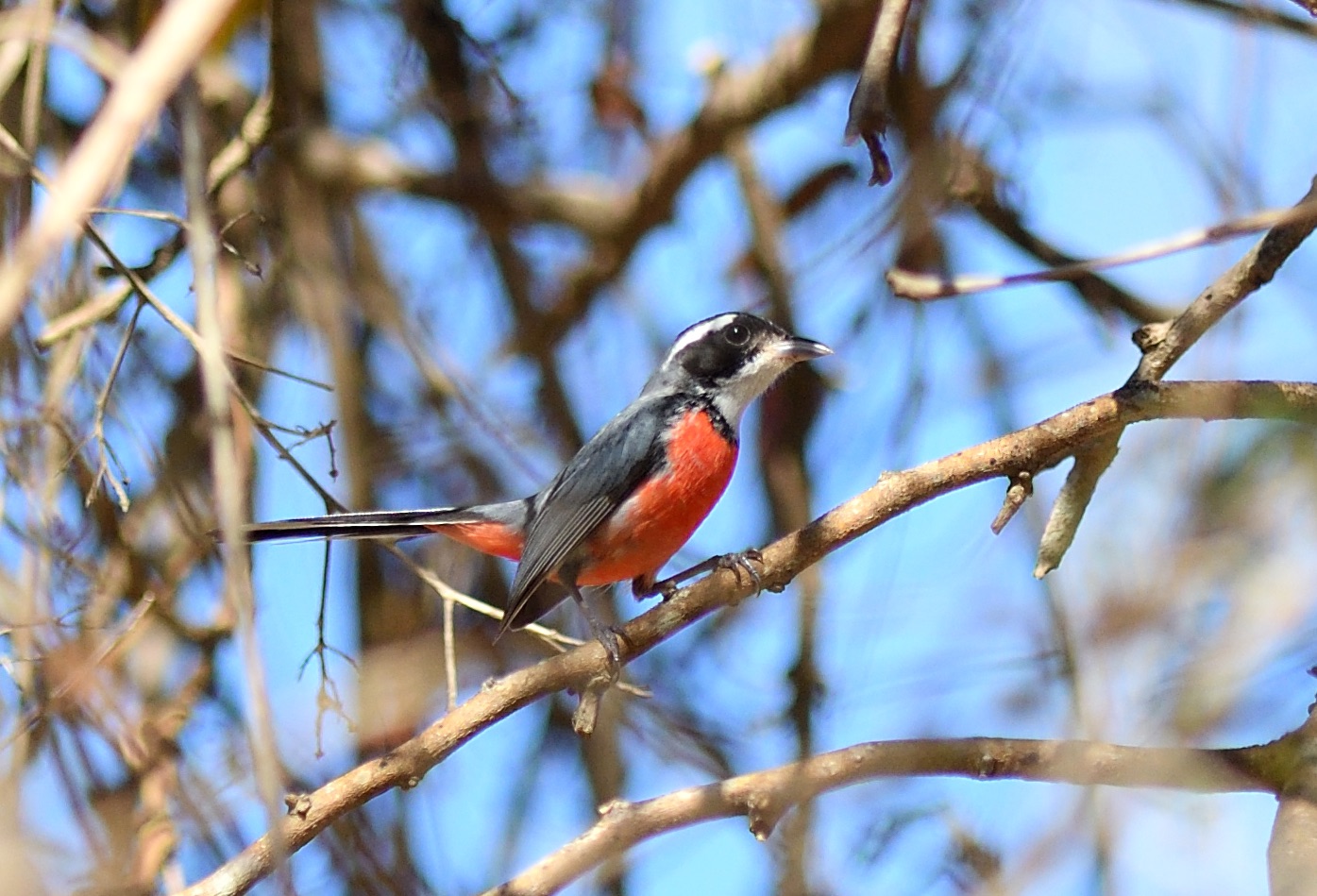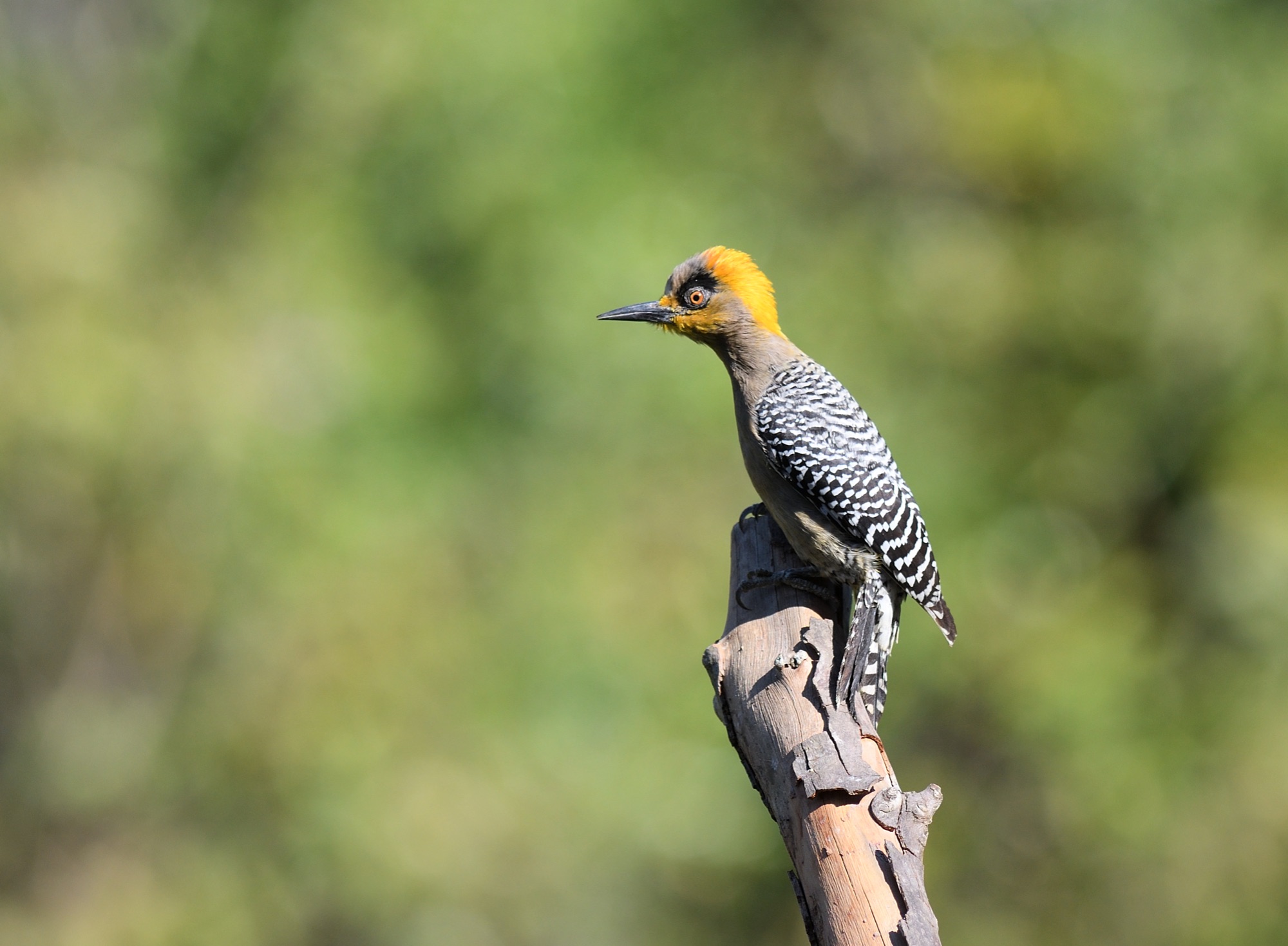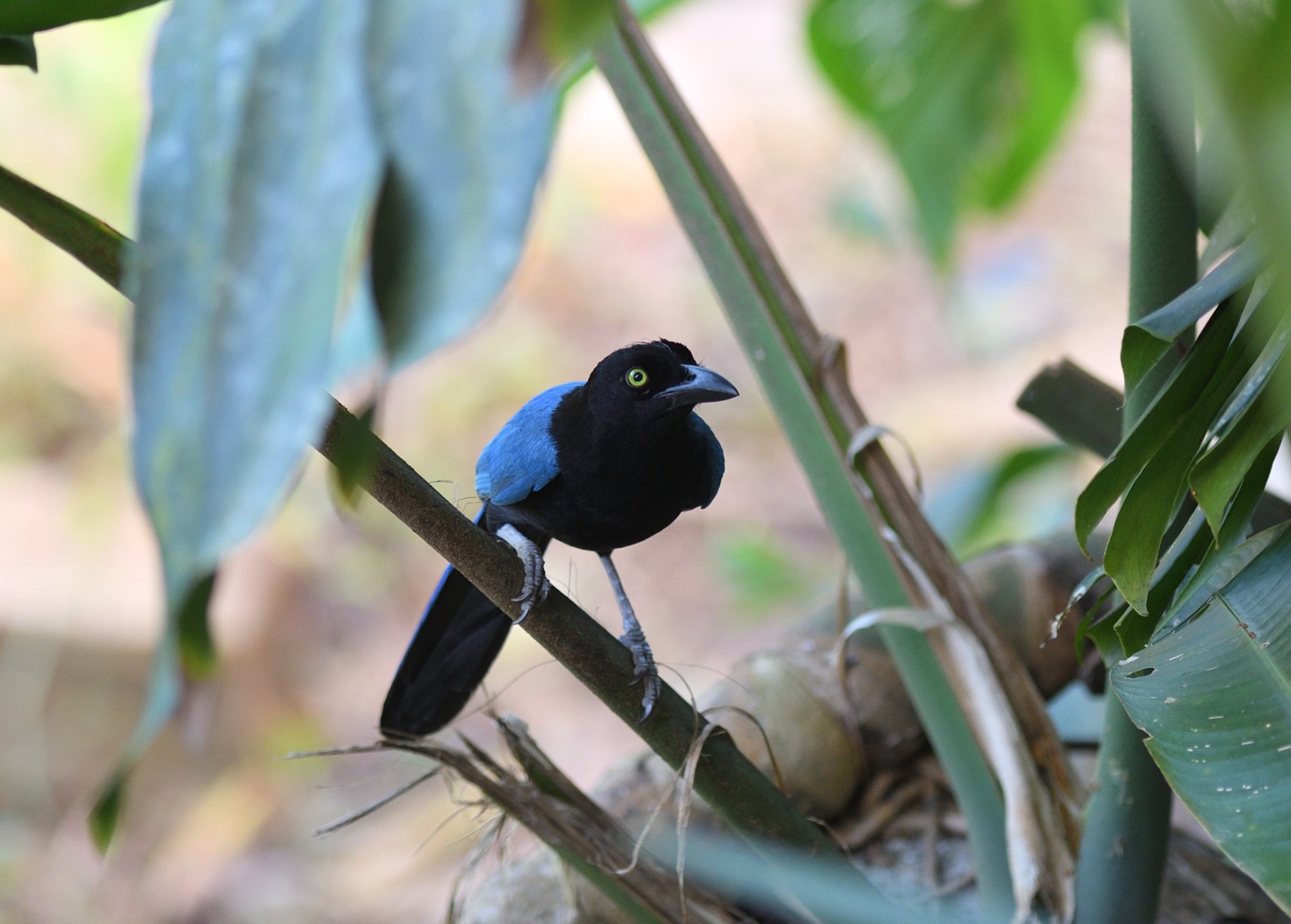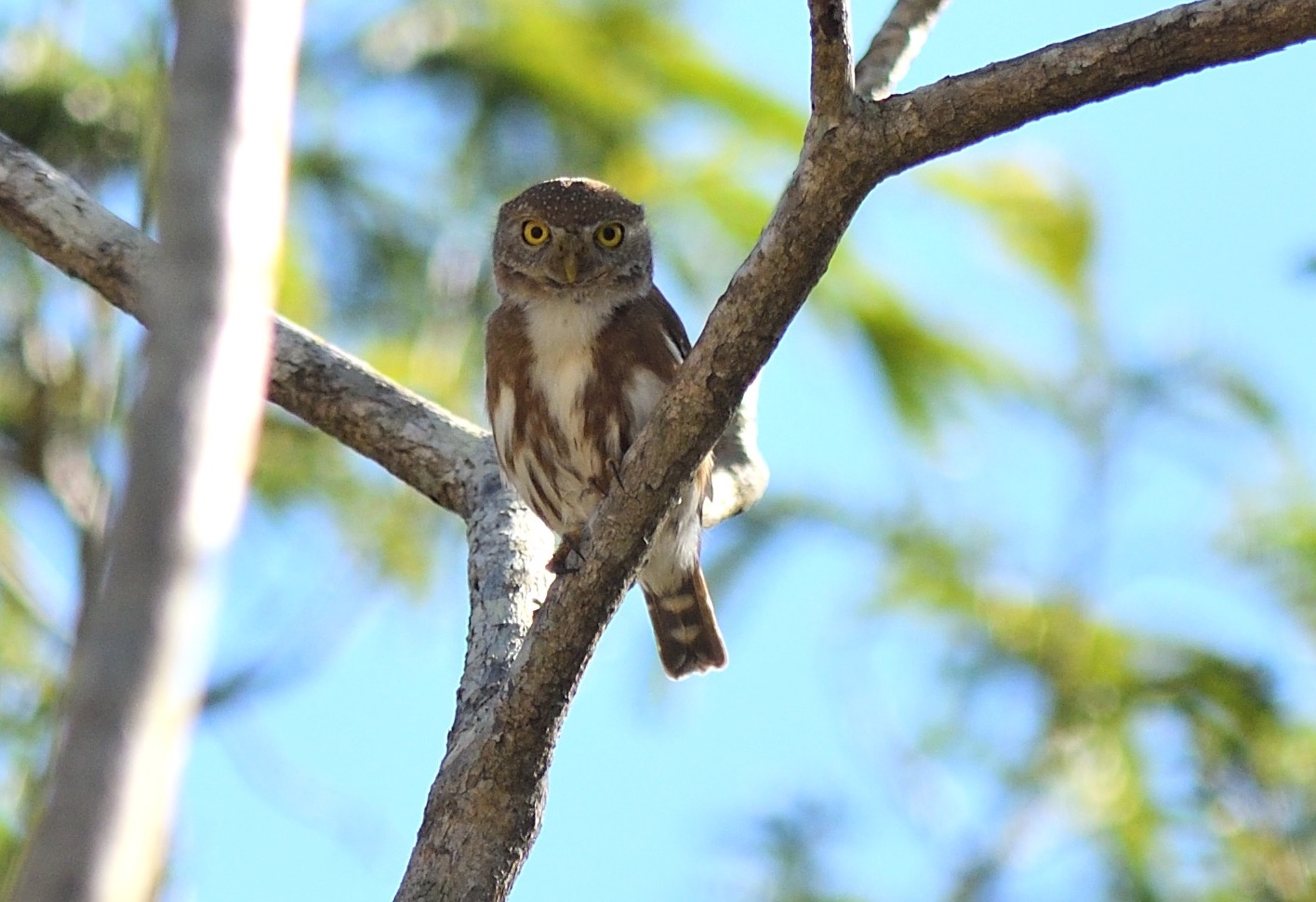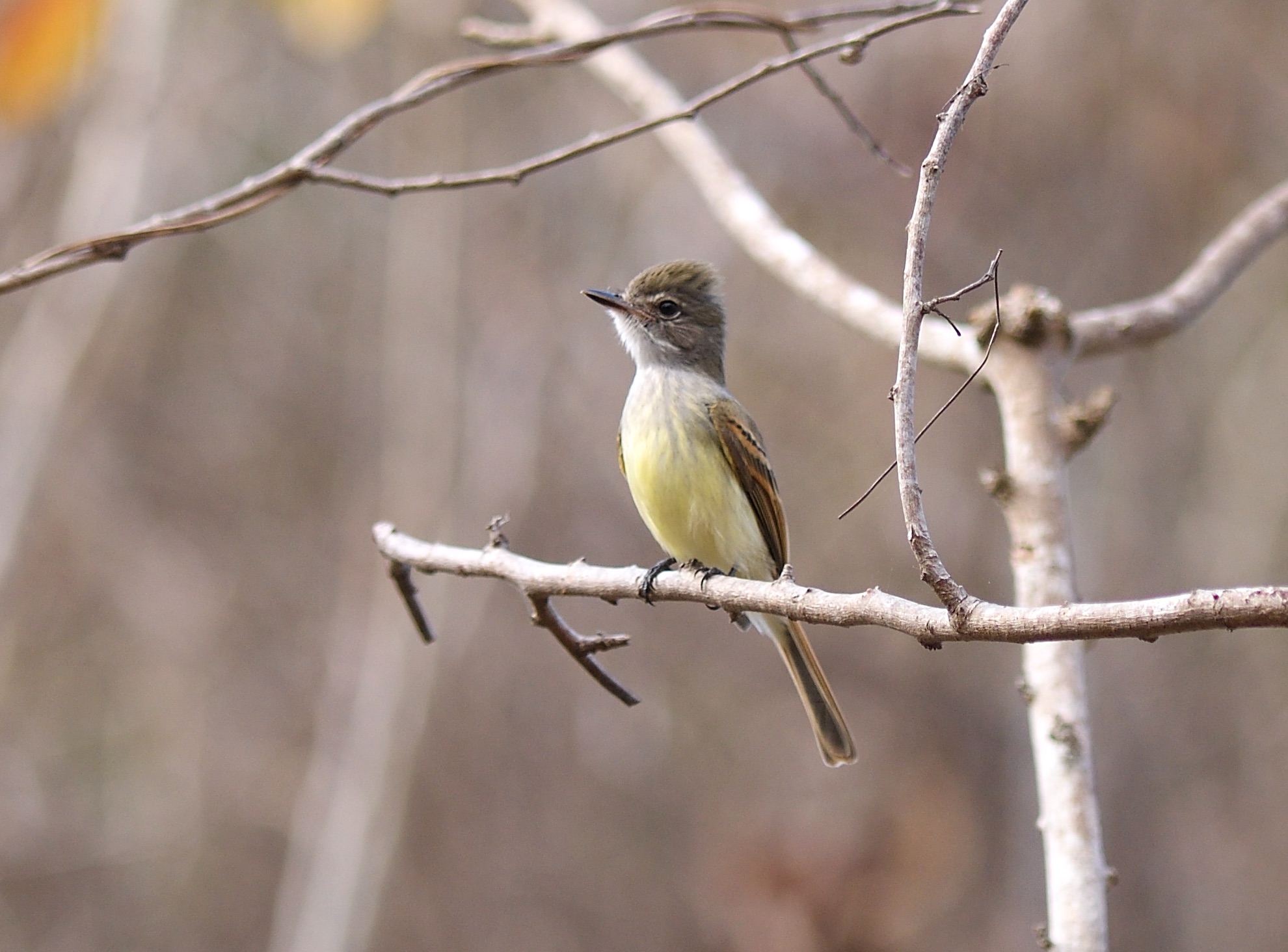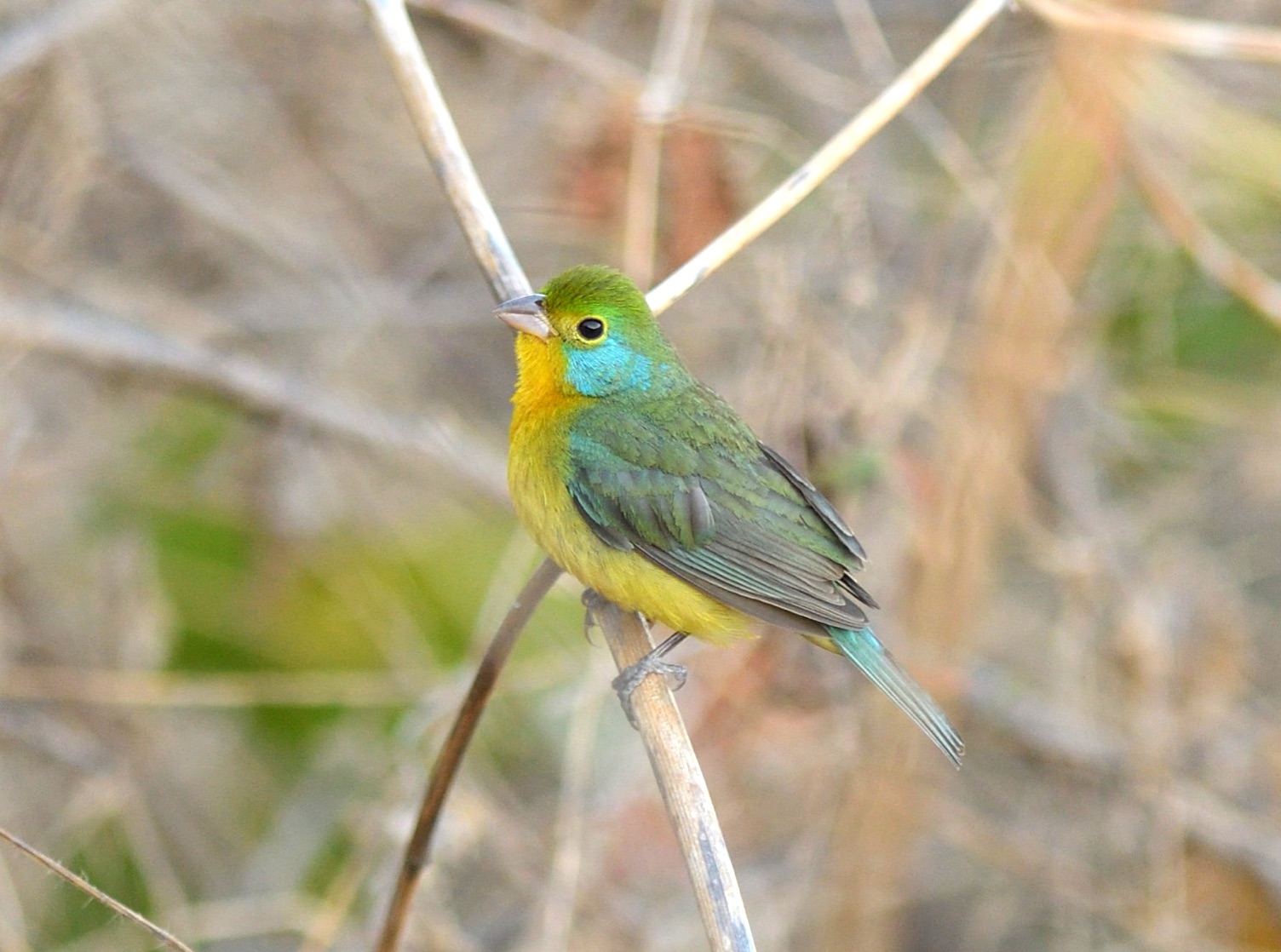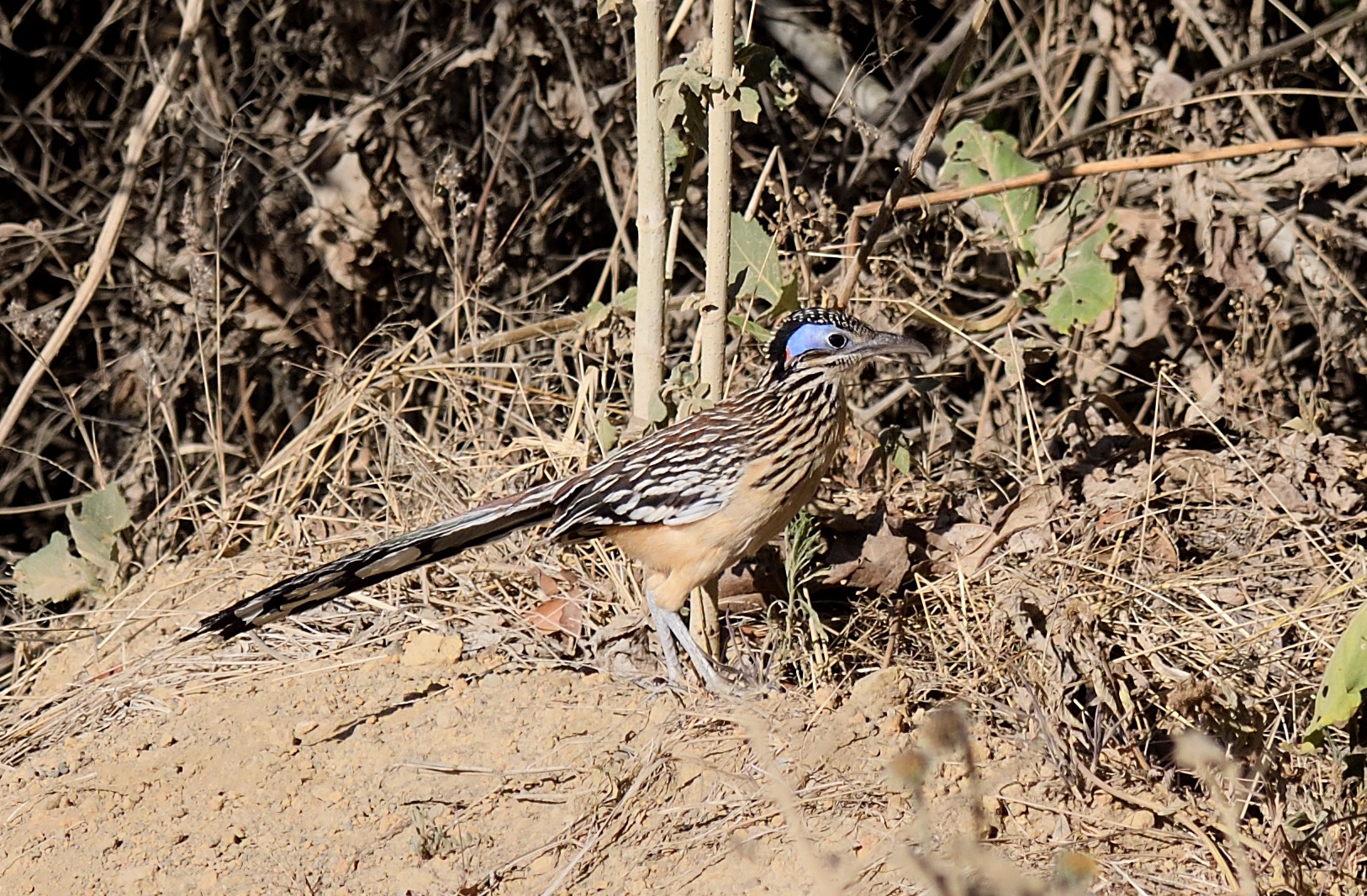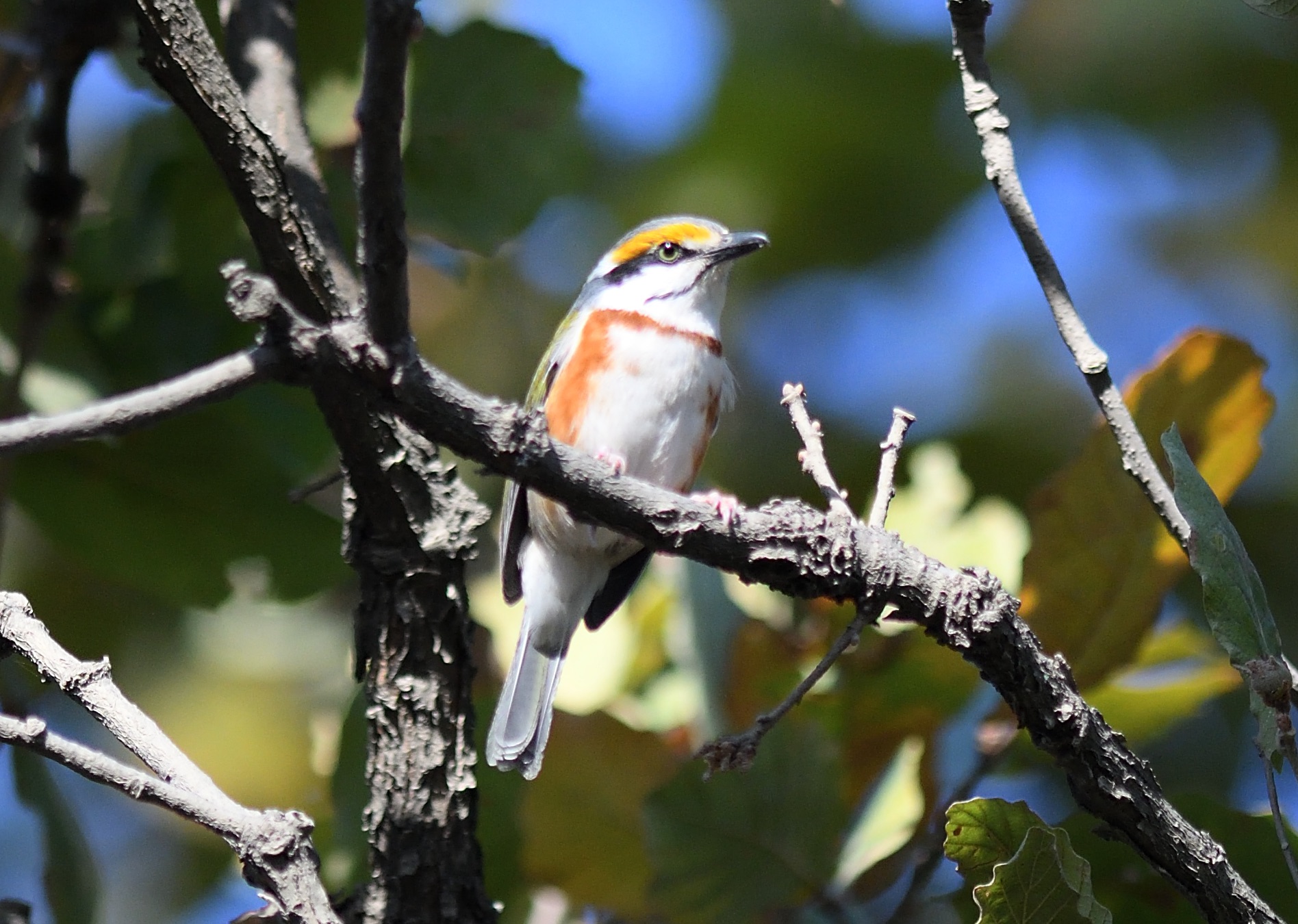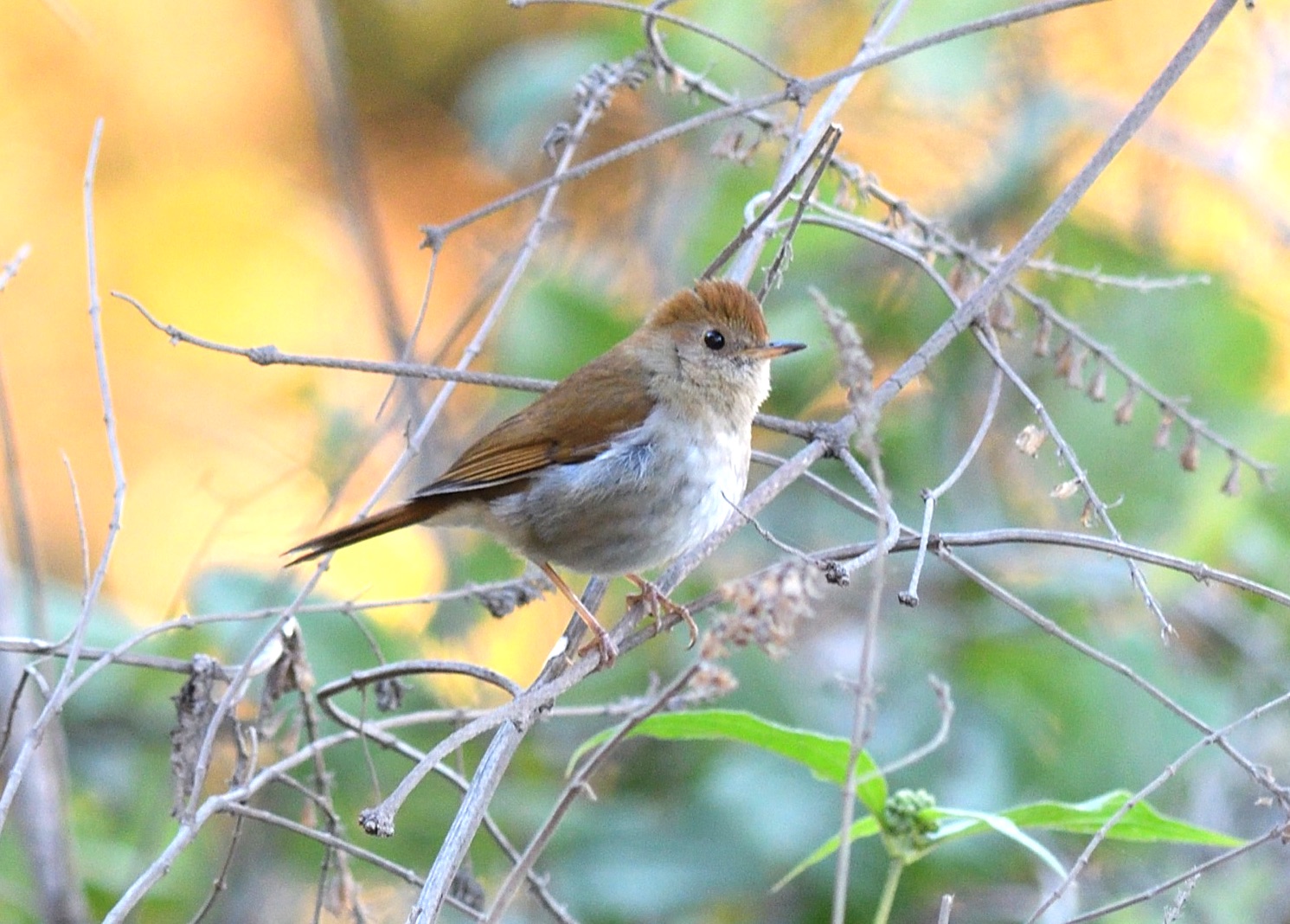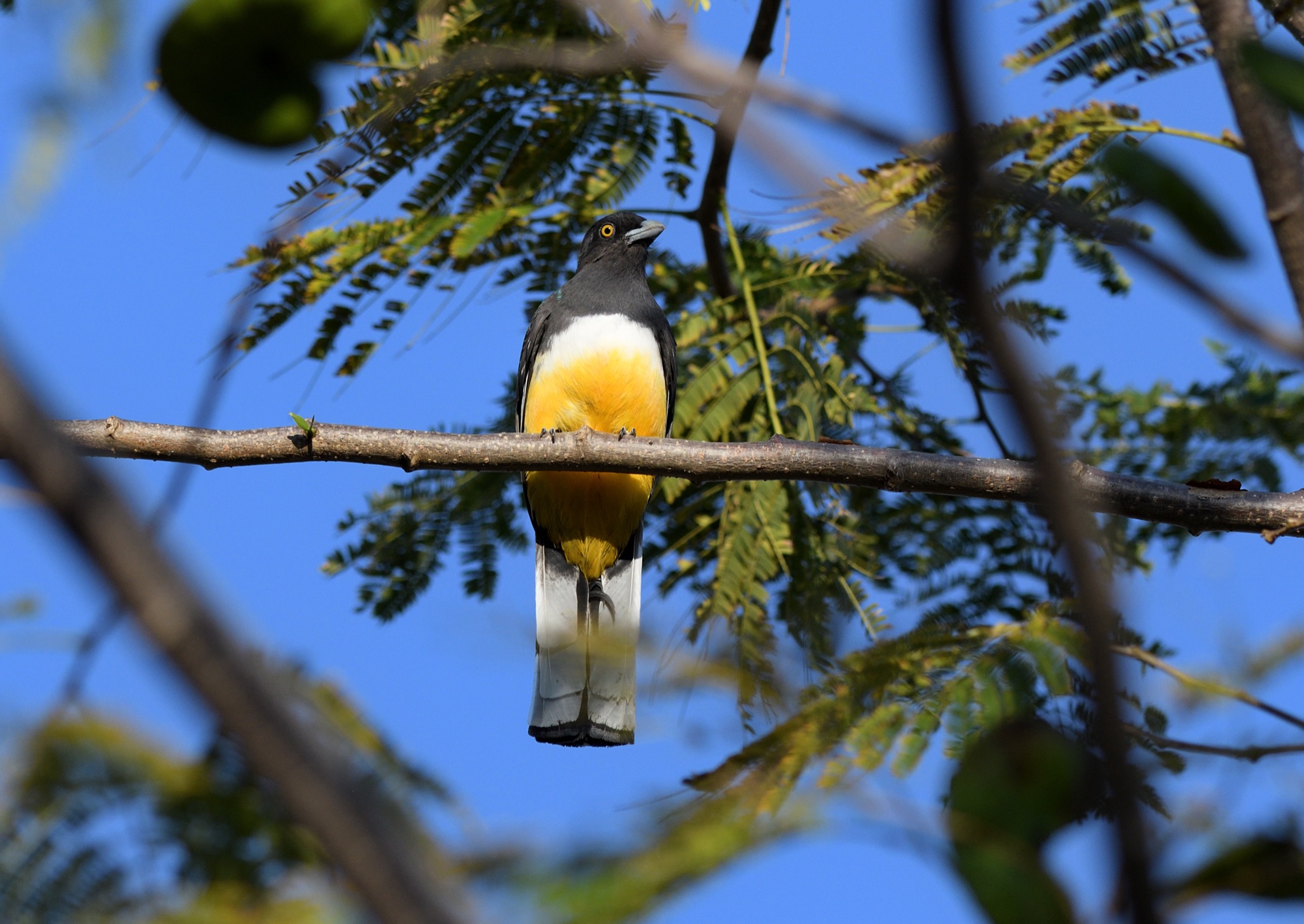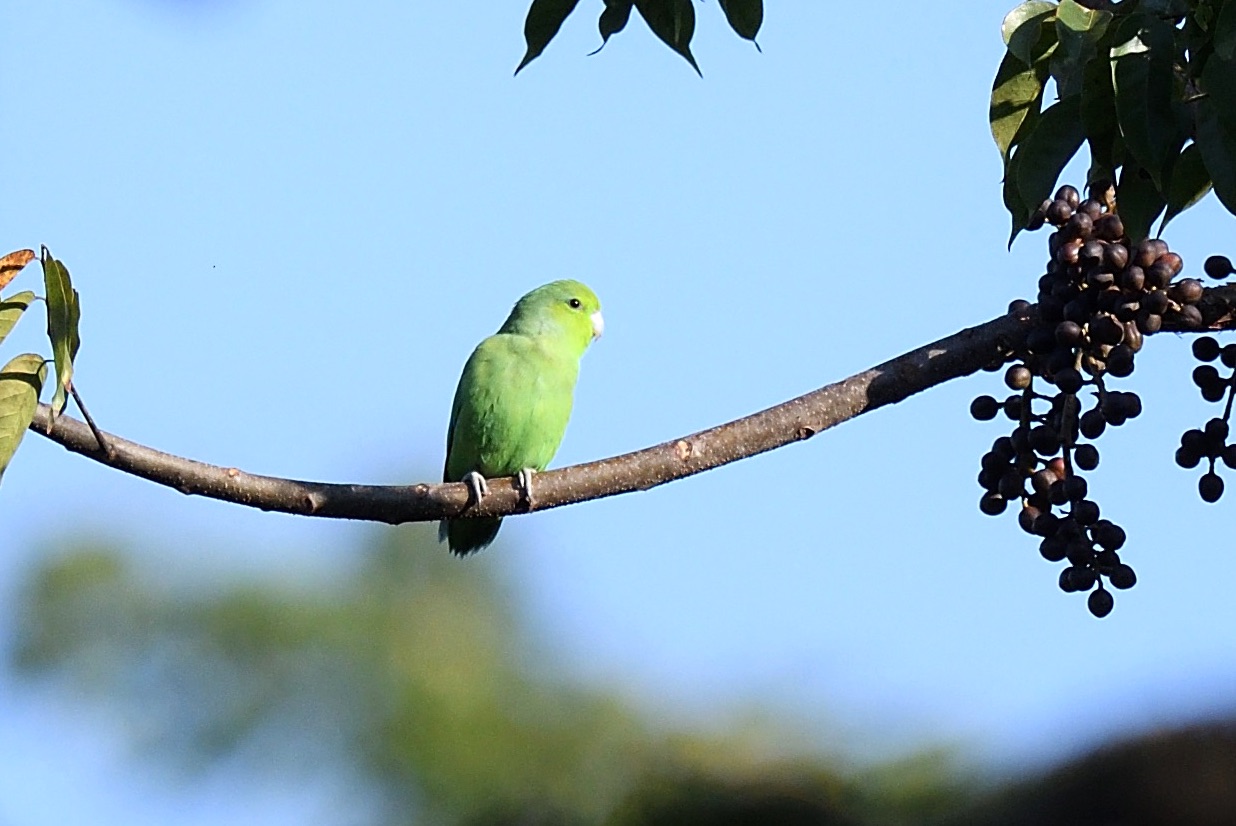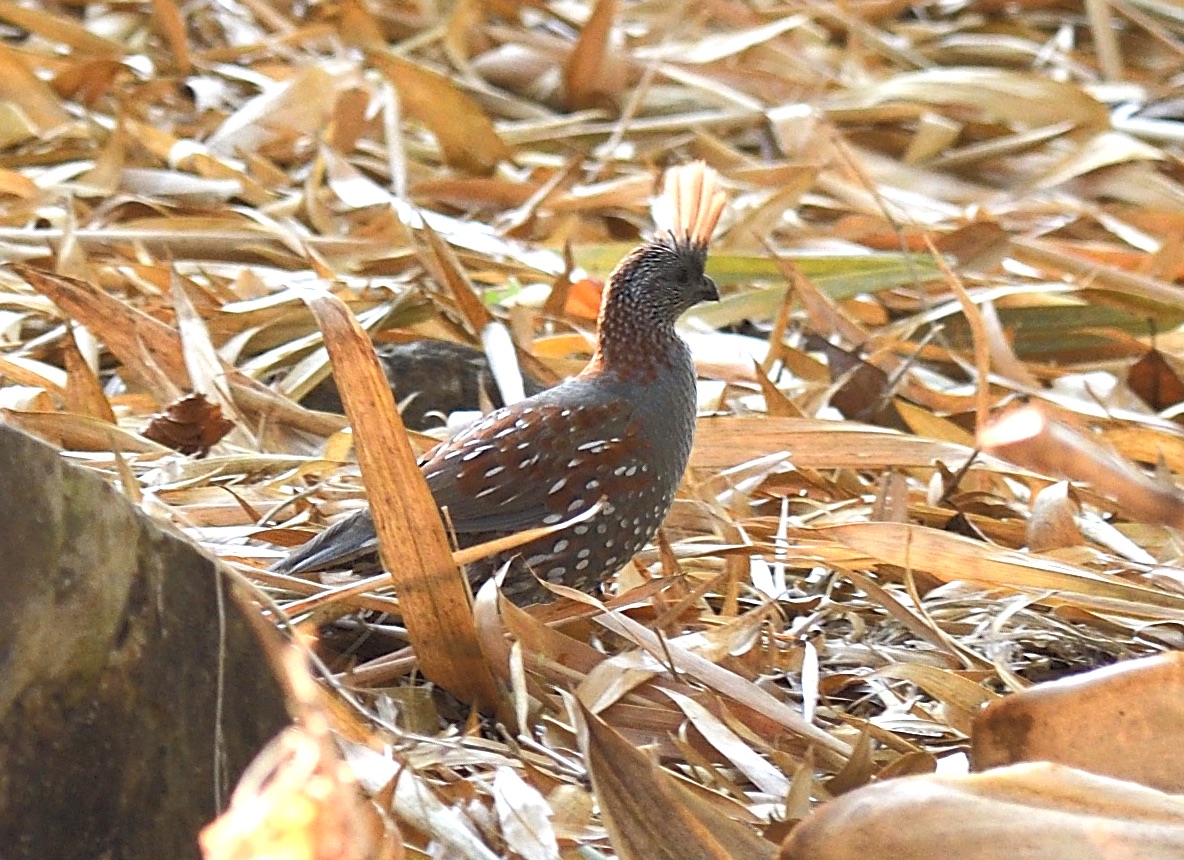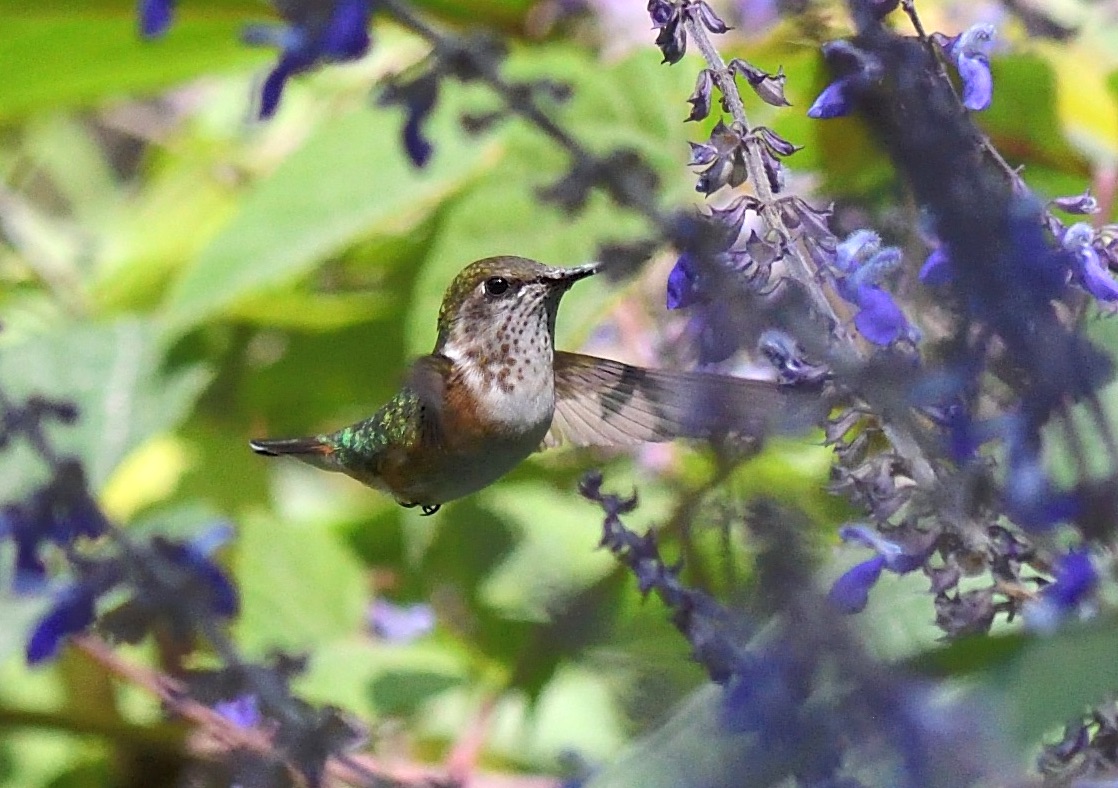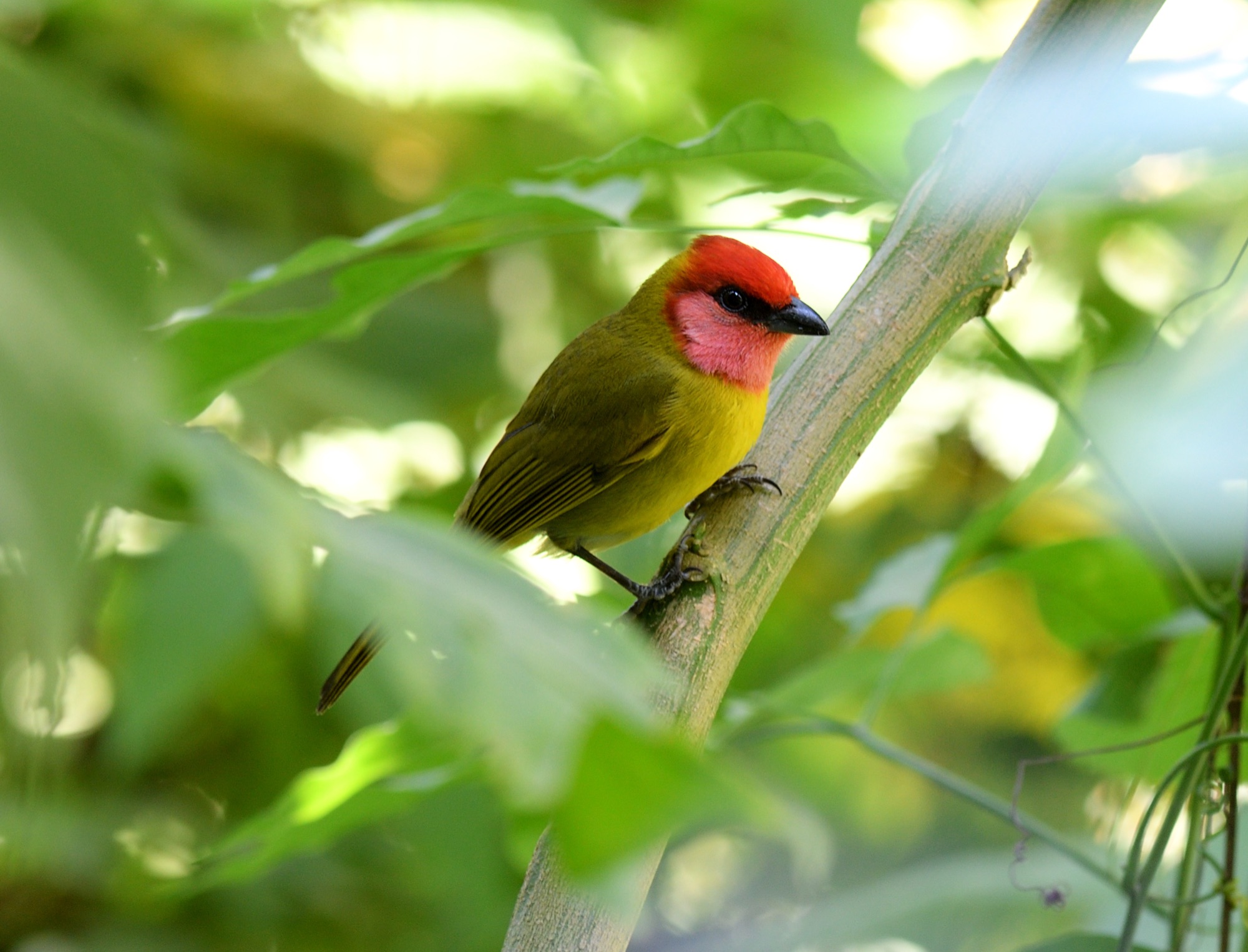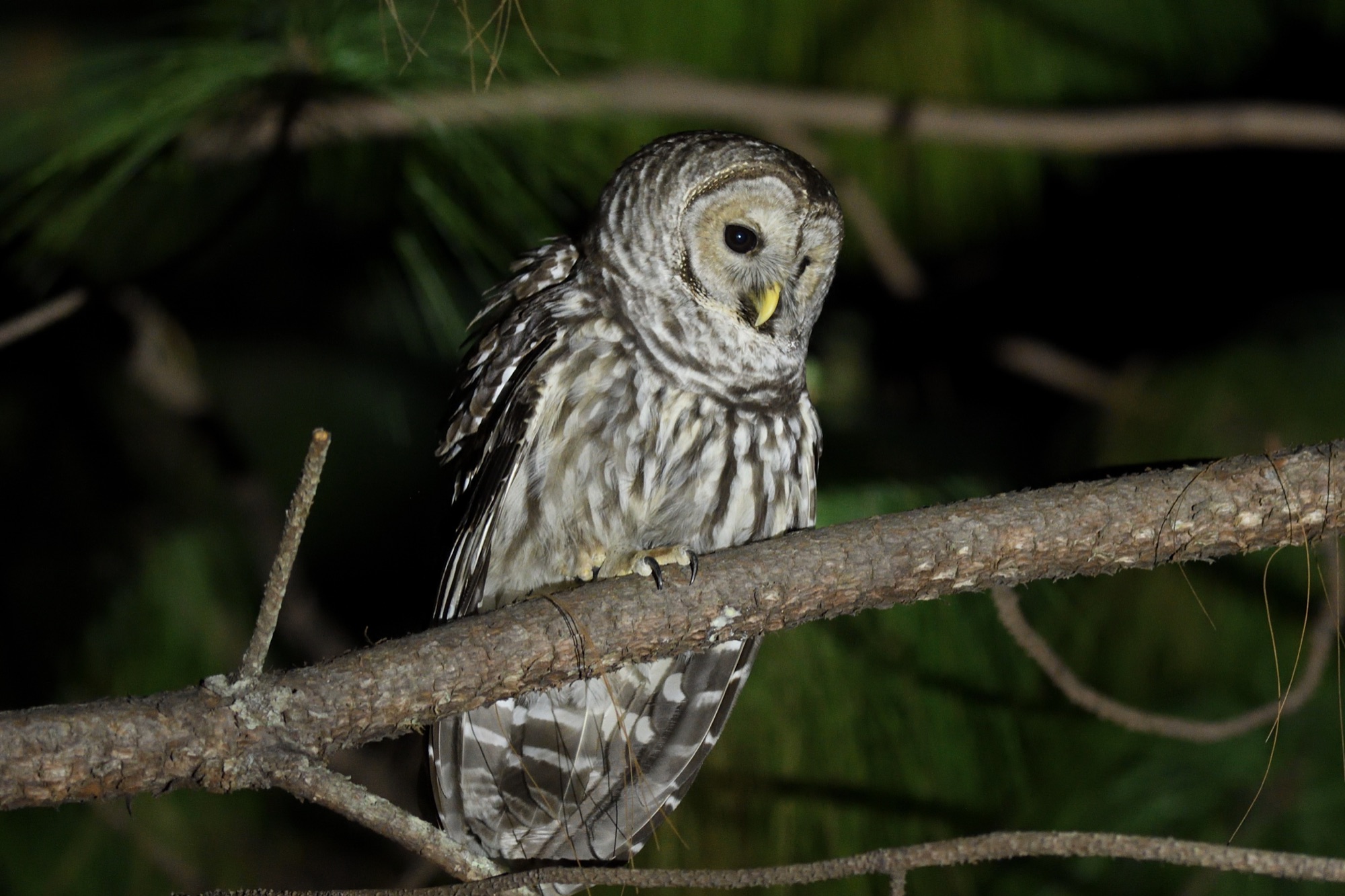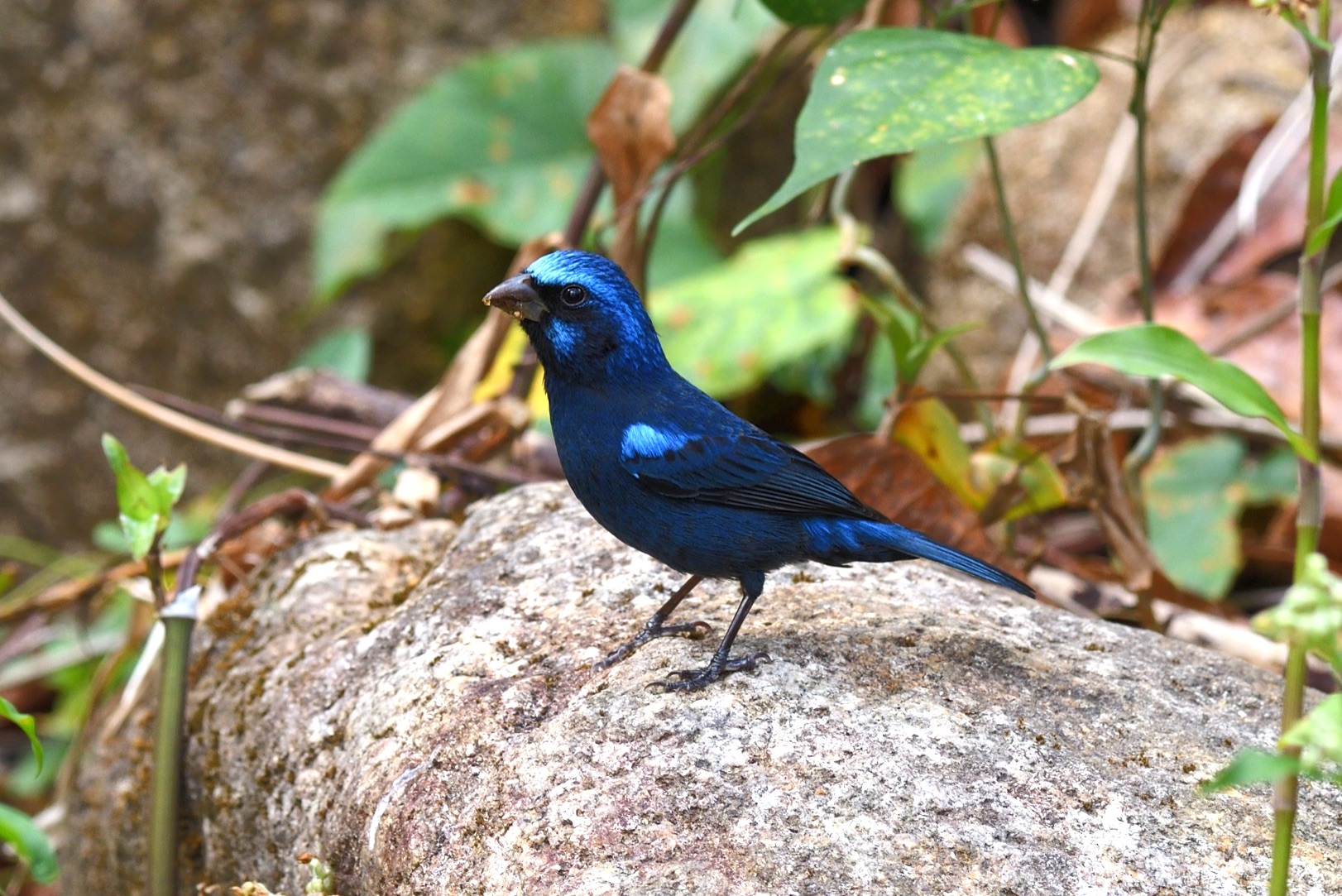WEST MEXICO TOUR REPORT 21st FEBRUARY - 9th MARCH 2017
TOUR HIGHLIGHTS
Either for rarity value, excellent views or simply a group favourite:
- Rufous-bellied Chachalaca
- Elegant Quail
- Long-tailed Wood-Partridge
- Rufous-necked Wood-Rail
- Lesser Roadrunner
- Balsas Screech Owl
- Mexican Barred Owl
- Colima Pygmy Owl
- Northern Potoo
- Mexican Whip-poor-will
- Eared Poorwill
- Mexican Hermit
- Mexican Violetear
- Mexican Woodnymph
- Bumblebee Hummingbird
- Citreoline Trogon
- Coppery-tailed Trogon
- Russet-crowned Motmot
- Golden-cheeked Woodpecker
- Lilac-crowned Amazon
- Mexican Parrotlet
- Military Macaw
- Chestnut-sided Shrike-Vireo
- Black-capped Vireo
- Dwarf Vireo
- Golden Vireo
- San Blas Jay
- Tufted Jay
- Black-throated Magpie-Jay
- Flammulated Flycatcher
- Grey Silky-Flycatcher
- Spotted Wren
- Blue Mockingbird
- Brown-backed Solitaire
- Russet Nightingale-Thrush
- Olive Warbler
- Crescent-chested Warbler
- Colima Warbler
- Red-faced Warbler
- Golden-browed Warbler
- Red Warbler
- Collared Towhee
- Rusty-crowned Ground Sparrow
- Green-striped Brush-Finch
- Red-headed Tanager
- Red-breasted Chat
- Varied Bunting
- Orange-breasted Bunting
SUMMARY:
West Mexico is a birders paradise with a superb variety of habitats that harbour an exciting cast of endemics, along with an excellent supporting cast of amazing birds. Our tour produced 327 species seen, of which 47 were Mexican endemics. But it’s not just about numbers and the overall experience of seeing a wide variety of wintering warblers usually in large flocks, some good shorebirds, and a wide variety of hummers, parrots and other really rare birds all in lovely warm sunshine certainly made this a very enjoyable tour. We travelled from Puerto Vallarta, where Blue Mockingbird was a garden bird, along the coast to Volcan de Fuego and its sister, Volcan de Nieve where we encountered Lesser Roadrunner, numerous Orange-breasted Buntings and the fabulous Chestnut-sided Shrike-Vireo. Incredible San Blas was next and a couple of boat rides were thoroughly enjoyed by everyone with views of Northern Potoo that just couldn’t be beaten. Possibly the Tufted Jays along the Durango Highway were our birds of the trip, although some great night birds including Balsas Screech-Owl, Colima Pygmy-Owl, the huge Cinereous Owl, Mexican Whip-poor-will and Eared Poorwill also took some beating. What a great birding destination and we just can't wait to return.
Days 1 - 2 PUERTO VALLARTA
Following an overnight flight via Mexico City we eventually arrived in the charming resort of Puerto Vallarta shortly after 8am. Everyone had decided to fly out two days early and get fully recharged before the tour officially commenced and so, of course, we began our birding immediately. Driving south out of the town we followed the coast road and made our first stop opposite a couple of large offshore islands where lots of Brown Pelicans were nesting. Several Magnificent Frigatebirds soared against the clear blue sky and we also saw loads of Royal Terns fishing offshore. All of a sudden a Citreoline Trogon flew past us and landed in a nearby large tree. How bizarre! As we followed this beauty a pair of Greyish Saltators were found, followed by Nashville Warbler, San Blas Jay, and an Ivory-billed Woodcreeper.
A short drive further along the coast road took us to the Botanical Gardens and this turned into a very productive session. Just below the car park we saw a large feeding flock containing Hooded Orioles, maybe 10+ stonking Varied Buntings (a bird I really wanted to see after missing it in west Texas & Arizona), several Nashville Warblers, Orange-crowned Warbler, a close Black-throated Grey Warbler, Wilson’s Warbler and the first of many Yellow-winged Caciques. We headed down to the restaurant, where we were due to have lunch and spent a very enjoyable time watching the feeding station below us. Once some fruit was placed on the large ‘bird table’ a group of Yellow-winged Caciques flew in and provided us with much entertainment, although the presence of several superb Golden-cheeked Woodpeckers proved something of a distraction, as did a pair of Godman’s (Scrub) Euphonias. A MacGillivray’s Warbler decided to ponce around out in the open below the feeding station, a few Green Jays also put in an all-too brief appearance, and both Plain-capped Starthroat and Cinnamon Hummingbird were drawn to the hummer feeders here. Lunch was very nice and during this time we could observe the feeders, as well as a fruiting “Gumbo Limbo” tree which drew in Orange-fronted Parakeets, Plumbeous Vireo, Social Flycatcher, several Rose-throated Becards, 5+ Masked Tityras, and a Lineated Woodpecker. Phew! But for me the best sighting was the obliging pair of Rusty-crowned Ground-Sparrows that appeared below the feeders.
Leaving here we walked along some of the trails and found a Golden-crowned Emerald and a cracking Grey-crowned Woodpecker. But by now it was well after 2pm so we decided to drive the 10 minutes to our wonderful lodge and just chill out for the remainder of the day. Needless to say the draw of new birds had us watching the surrounding forest and gardens from the veranda immediately upon arrival…! This was another cracking location and we had a fantastic view of the area and from the comfort of our chairs could observe our first Grey-crowned Becard, Bright-rumped Attila, Streak-backed Oriole, Thick-billed Kingbird, Golden Vireo and also get closer views of the Orange-fronted Parakeets. Things got even better once we began walking around the garden with the major highlights being an uncharacteristically showy Blue Mockingbird and a Russet-crowned Motmot perched on a large boulder in the middle of the stream. Other goodies along the river included several female Blue Buntings, Pacific-slope Flycatcher, Louisiana Waterthrush, Sinaloa Wren, several Audubon’s Warblers and a close Wilson’s Warbler. In the garden an Ivory-billed Woodcreeper showed well, several Stripe-headed Sparrows gave their jangling song, and our first Rufous-backed Thrushes were much appreciated. There was also a Clay-coloured Robin, Yellow-breasted Chat, Greater Pewee, several Berylline Hummingbirds and a Black-throated Grey Warbler. We spent quite a while watching the buntings and warblers coming to drink in the middle of the stream and were also entranced by the motmot, but time passed all too quickly and tiredness began to creep in so we retired to the veranda for the checklist. This was continually interrupted by the ridiculously obvious Blue Mockingbird, some flyover Lilac-crowned Amazons, and a Rufous-backed Thrush. Oh and I forgot to mention the Green Kingfisher seen along the stream. Boy, we were loving the birding here in West Mexico and it’s great to share this with such an enthusiastic group and an equally enthusiastic and knowledgeable guide. Cant wait for tomorrow…
Day 3 PUERTO VALLARTA
After an 8am breakfast we drove maybe 15 minutes to a dirt road that took us up into the hills. Here amidst nice mixed pine-evergreen forest we spent an enjoyable couple of hours in perfect temperatures watching a real excellent cast of desirable species. We began with a pair of Rusty Sparrows, Tropical Parula, Black-headed Siskin, Acorn Woodpecker, and an extremely obliging Grace’s Warbler that gave cripplingly close views. Driving higher the next stop was timely as we entered woodpecker heaven with Yellow-bellied Sapsucker, a pair of Arizona Woodpeckers, Lineated Woodpecker and at least 3 Grey-crowned Woodpeckers. Some flowering bushes held Bullock’s Oriole, along with a number of previously seen warblers, a Squirrel Cuckoo and called in a Northern Beardless-Tyrannulet.
By now it was mid-morning and we decided to return to the Botanical Gardens as there were still a couple of birds we needed there. It was hot by the time we arrived so we made our way to the restaurant to view the feeding station, but it was all quiet. So we walked around the gardens hoping for Mexican Hermit and during our time here a few people in the group managed to catch a glimpse of it. But we did get a couple of Short-tailed Hawks and an immature Red-tailed Hawk flying over, and over the course of lunchtime a pair of San Blas Jays came in, along with a White-throated Thrush. There were also further reappearances of Plain-capped Starthroat, Rusty-crowned Ground Sparrow and MacGillivrays Warbler. Once we were done here most of us returned the short distance to our lodge for a rest, whilst Gary and Trevor remained behind and managed a view of the hermit, along with a Lucy’s Warbler and an Orange-billed Nightingale Thrush.
Back at the lodge and a cracking male Blue Bunting showed well, as did a Sinaloa Wren that allowed some decent photo opportunities. A last check around the gardens before dinner resulted in a pair of Black-vented Orioles and a White-collared Seedeater. Our first night-birding session drew a blank due to cool temperatures, light rain and low cloud! Go figure! But a Common Pauraque was found on its roosting branch in the lodge gardens before we retired for the night.
Day 4 PUERTO VALLARTA - BARRA DE NAVIDAD
Breakfast was at 7am and then we headed towards the coast and a quiet country road that took us through rolling forested hills and into the thorn forest that is home to some very special birds. Along the way we stopped at an overlook where Lilac-crowned Amazons flew around us, Acorn Woodpeckers scolded from dead trees and cute little Tropical Parulas dazzled us in the morning sunshine. A burst of activity created by our owl tape brought in Berylline, Broad-billed and Cinnamon Hummingbirds, with our first Violet-crowned Hummingbird being particularly well received. Lower down the road and a pair of Military Macaws flew over calling raucously, a Bright-rumped Attila tried its best not to be seen despite calling constantly, and our first Happy Wren was seen pretty well. Our next stop proved to be a belter as we called in a Colima Pygmy-Owl and this bird came right in and perched up right beside us and continued to stay with us for ages, even when we became engrossed with scope views of Coppery-tailed Trogon – the split from Elegant Trogon. Next up was a Ferruginous Pygmy Owl just a little bit further along the road and then I was so pleased when Julie called the stunning Red-breasted Chat. What a performance we had as two males and a female appeared and over the course of the next 20 minutes we worked on getting better and better views. Even a very obliging Happy Wren failed to distract us from this vision of crimson and white dancing around the bushes in front of us. One last stop of the morning was also a corker with several Citreoline Trogons, Dusky-capped, Nutting’s and Brown-crested Flycatchers and Lucy’s Warbler, with White-tailed Hawk and 3 Grey Hawks flying overhead. Oh and one final, and I mean it, stop proved a fitting climax to an already amazing morning’s birding with a male Orange-breasted Bunting – and what a bird that is! A Pale-billed Woodpecker and Common Black Hawk were practically ignored as they just cannot compete with this vision of blue and orange!
Lunch was at a beachside restaurant, complete with Royal Terns, Great Blue Heron and several American Oystercatchers. Leaving here we set off on the drive south to Barra de Navidad, seeing West Mexican Chachalaca and Vaux’s Swift on the drive. Some roadside wetlands were great as well on this route. The first one had a flock of Black-bellied Whistling-Ducks, a few Fulvous Whistling-Ducks, White Ibis, Roseate Spoonbill, Green Heron, Tricoloured Heron, Anhinga, Northern Jacana, Blue-winged Teal, Least Grebe and Ruddy Duck. The second one had a few Stilt Sandpipers, Western Willet, American Avocet, Black-necked Stilt, Lesser Yellowlegs, Mangrove and Tree Swallows, Steak-backed Oriole and a showy Pacific-slope Flycatcher. What a great couple of list building sessions. We eventually reached our hotel at 6.30pm and enjoyed some cold beers and margaritas over dinner.
Day 5 PLAYA DE ORA ROAD
This was a slower day as we birded the famous Playa de Ora Road that transects some interesting dry thorn forest but these days the road is almost impassable and it took some neat manoeuvring to get our two vehicles along it. Around the fields at the base of the hills a cracking male Orange-breasted Bunting appeared, along with the usual high numbers of Nashville Warblers, and a few Stripe-headed Sparrows. An Olive Sparrow showed well, as did Citreoline Trogon, a few Warbling Vireos, a flock of White-throated Magpie-Jays, and another Ferruginous Pygmy-Owl before we eventually nailed the tricky endemic Flammulated Flycatcher. Then we drove down to the beach where a huge flock of Blue-footed and Brown Boobies were fishing way offshore. Along the beach we saw American Kestrel, Ash-throated Flycatcher, Northern Mockingbird, and a female Blue Grosbeak.
Driving back up across the hills we saw a Swainson’s Thrush feeding along the road and eventually a White-bellied Wren. Driving to Colima took about 90 minutes and along the way we saw a Roadside Hawk. We arrived at the motel at 5pm and took the opportunity for a rest before dinner.
Day 6 VOLCAN DE FUEGO - LA CUMBRE
A great day began with a drive along some dry forest and fields and this resulted eventually in a good sighting of the endemic Black-chested Sparrow singing from a perch on the grassy slope above us after a bit of a runaround. I was amazed at the number of Orange-breasted Buntings here too and we also saw Stripe-headed Sparrow, Lark Sparrow, and along the river Yellow-crowned Night-Herons, Neotropic Cormorant and a Ringed Kingfisher. Then we drove up to the recently and apparently continuously erupting Volcan de Fuego where along the lower slopes (the upper roads were closed) we thoroughly enjoyed our crippling views of a group of Spotted Wrens. Moving up and we discovered a fruiting tree with several Brown-backed Solitaires and Grey Silky-Flycatchers feeding. We also saw Cassin’s Kingbird, Cooper’s Hawk, Ladder-backed Woodpecker and a showy Canyon Wren sang its heart out from a bridge. A side road really produced the goods with some confiding and stunning Vermillion Flycatchers that we spent some time with, and a flowering tree held loads of common warblers as well as our first and really stunning Slate-throated Whitestart and further up a few West Mexican Chachalacas as well. But I cannot tell you the exhilaration when, after some searching, Bill exclaimed “roadrunner, roadrunner, roadrunner…”. Holy Cow it was a Lesser Roadrunner sitting on a rock some 30 metres away calling back at my ipod. We lapped up the views, fired off a few photos and high-fived.! Perfect!
After a lengthy lunch with live music and pretty girl singers we explored the lowlands and found a pair of Rufous-naped Wrens, a perched Laughing Falcon along with Hammond’s Flycatcher and Cassin’s Vireo. We ended the day watching the sunset at La Cumbre before calling in a Balsas Screech Owl that showed very well for a minute before flying off.
Day 7 VOLCAN DE FUEGO - CUIDAD GUZMAN
Today we visited the other side of the ‘Volcano of Fire’ and began another cracking day’s birding in Mexico with an Elegant Euphonia singing at the start of the dirt track. A little further up a Hook-billed Kite soared overhead before landing briefly in a nearby tree and in the same area we also saw several Black-headed Grosbeaks, Curve-billed Thrasher, Orange-crowned Warbler, Short-tailed Hawk, Lincoln’s Sparrow, Indigo Bunting and Western Tanager. These lower slopes were mainly being used for agriculture and it was tricky to find some weedy/scrubby slopes but at one of the first ones we checked, a covey of Banded Quail scuttled out from the fence line and out of sight – but straight onto our life lists! Our luck was truly in today as we found another Lesser Roadrunner, this one doing what roadrunners should be doing and running along a dirt road. Fantastic! It came really close towards us and even perched up on a fence post before disappearing. Continuing up the sunny hillside via a bumpy dirt track we also found a few birds feeding in a fruiting tree including Cassin’s and a Dwarf Vireo, Blue Grosbeak, Greenish Elaenia, White-striped Woodcreeper, Grey Silky-Flycatcher, and some of us saw a Long-tailed Wood-Partridge scuttle cross the track in front of us. Higher up amidst mixed oak-pine woodland we saw Hermit Warbler, Plumbeous Vireo, Bridled Titmouse, Brown-backed Solitaire, Townsend’s Warbler, Olive Warbler and we also eventually nailed a superb Chestnut-sided Shrike-Vireo.
Our picnic lunch was in a nice location in the forest and during this time we kept ourselves busy with Painted and Slate-throated Whitestarts, Tufted Flycatcher, a gang of Transvolcanic Jays, Crescent-chested Warbler, Red-faced Warbler, and a pair of Grey-barred Wrens. Moving lower we found a pair of skulking Golden-browed Warblers, followed by a pair of Collared Towhees and also a brief Rufous-capped Brush-Finch.
Leaving here we visited the Ciudad Guzman wetlands and found Cinnamon-rumped Seedeater (split from White-collared Seedeater), Solitary Sandpiper, Killdeer, Least Sandpiper, Cinnamon and Green-winged Teals and lots of other common species along a quiet side road. Moving on to another nice spot we called in Sora and Virginia Rails before watching 1000’s of Yellow-headed Blackbirds flying through the valley to their roost. It was quite a day!
Day 8 VOLCAN DE NIEVE
What better way to start another brilliant day’s birding under a cloudless blue sky than with a calling Collared Forest-Falcon? We drove up to over 10,000 feet today along a better track than yesterday, but only just! Our next stop was at an open area where we scanned the opposite slope and discovered Brown-throated Wren, Collared Towhee and Rufous-capped Brush-Finch. I was really pleased to see White-eared Hummingbird this morning, having missed it in Arizona last year as we were too early. Once we reached the first conifers we saw Brown Creeper, another obliging Chestnut-sided Shrike-Vireo, and a bunch of other common warblers. It really is quite phenomenal to see so many warblers every day on this tour. Continuing higher there was Grace’s Warbler, a Green-striped Brush-Finch feeding in the track, Hammond’s Flycatcher, Ruby-crowned Kinglet and Rufous Hummingbird, but only heard a Mountain Pygmy Owl.
Next up was Olive Warbler, Hepatic Tanager, Golden-browed Warbler, Coppery-tailed and Mountain Trogons and for a few lucky individuals an Amethyst-throated Mountain-gem. It’s quite tricky getting to grips with hummers here as you have to stake out the lines of flowers in the forest and they don’t stay very long, so be quick! But everyone saw more White-eared Hummingbirds, as well as Rivoli’s (Magnificent) Hummingbird. As we got higher Mexican Chickadees became common although it took me a while to see the first one, and Golden-crowned Kinglets were numerous. A singing Mexican Violetear was scoped at the top of a conifer, and we watched a Cinnamon-bellied Flowerpiercer doing what it does among some red flowers, and a Grey-breasted Wood-Wren did its best to distract us. We’d been hoping all day for a Red Warbler and after a few brief single observer sightings we finally tracked one down for all to see at 5pm – it had only taken 10 hours to find it! It was unfortunate that only Gary really had a tickable view of a Colima Warbler in a quick-moving warbler flock later in the day.
But we still had time to visit the wetlands where Sora and Virginia Rails appeared again, plus Black-crowned Night-heron, Tricoloured Heron, Common Yellowthroat and Least Grebe.
Day 9 VOLCAN DE NIEVE
Started the day at sunrise on the slopes of Volcan de Nieve, and this time we made it up to around the Km15 marker before stopping. This necessitated a 6am departure from the hotel, with a quick stop to grab some coffee and food for breakfast from a gas station… Literally the first bird of the day was a superb Mexican endemic Russet Nightingale-Thrush posing beside the track and it really didn’t seem to mind being watched and photographed as it remained in the same spot for several minutes. Yes! But we were on a mission to find some new hummers and with just a few hours to spare before the long drive north towards Puerto Vallarta we set off higher up the volcano to an area that had a lot of flowers. Here we had a ‘hummer fest’ with Mexican Violetear, White-eared, a cracking male and several female Rufous, and several Broad-tailed Hummingbirds. I was particularly pleased to catch up with a female Amethyst-throated Mountain-gem which I had missed yesterday. However, the star bird and after a 21 year wait I finally nailed Colima Warbler – after poor views in Big Bend, Texas when I was just a nipper! It appeared right beside the track at head height, feeding quietly in a dense bush and was on view for just a short while but it was close and in the bag. OH YES! There were also plenty of Grey Silky-Flycatchers, a near-endemic as it just hops over the border into Guatemala. The other goodie of the morning was a fantastic Red Warbler beside the track and apart from a large warbler flock containing all the usual suspects we had reached the end of our time here as it was 11am. When I tell you we finally reached the hotel on the seashore south of Puerto Vallarta at a little before 8pm, you’ll understand how tired I was feeling having driven for 9 hours to get here! We did see a few birds along the road but nothing new and with the prospect of wifi and field notes to type it was a late night for me!
Day 10 PUERTO VALLARTA - SAN BLAS
It was nice to wake up to the sound of waves crashing on the shore just 30 metres from our hotel rooms and American Oystercatchers calling away. After a huge breakfast we birded our way back to the highway some 40kms away and began with a pair of West Mexican Chachalacas beside the track leading away from the hotel, a close flyby from a Northern Crested Caracara, followed by the first of many Orange-breasted Buntings, Nutting’s Flycatcher, Thick-billed Kingbird and a Northern Beardless Tyrannulet all coming in to our owlet impersonation. A short way further along the road and more birds came in to our owlet tape including our first Ruby-throated Hummingbird and a showy White-bellied Wren amongst lots of commoner species.
The next stop was great as so many birds appeared in the trees around us, but this time we saw quite a few Lucy’s Warblers, along with a young male Citreoline Trogon, a Yellow-breasted Chat scolded away from a brush pile in the field behind us, a Black-and-white Warbler clambered around the branches of a bare tree right next to us and a Willow Flycatcher called from its perch nearby. As we drove a few more kilometres we noticed a small pool had lots of birds and my vehicle stopped to scan the area and resulted in 5 species of bunting coming in and pride of place went to the two male Painted Buntings, but there was also Blue, Orange-breasted, Lazuli and Indigo as well. Meanwhile the front van had cripplingly close views of a Red-breasted Chat. Once everyone had seen the buntings, and it was a shame we couldn’t get on to the calling Purplish-backed Jays we returned to see the Red-breasted Chat. This time a Ferruginous Pygmy Owl flew in. Further on a Bat Falcon was spotted by Julie, before a Grey Hawk and 2 Hook-billed Kites flew over, and a Green-crowned Emerald appeared. And our best and closest view of a male Citreoline Trogon appeared in a small village along the way as well. Our final stop of the morning, and by now it was almost 11am, finally scored with a female Black-capped Vireo appearing amidst a flurry of other agitated birds including Bell’s Vireo and Rufous-capped Warbler. Then we drove through Puerto Vallarta and further north towards San Blas, seeing Roadside Hawk, Belted Kingfisher, our first Sinaloa Crow, brief Black-throated Magpie-Jays and a flyover Western Osprey. Once at San Blas we checked out some pools and enjoyed an hour’s worth of easy birding, seeing Roseate Spoonbills, American Avocets, Short-billed Dowitchers, Stilt Sandpipers, Greater and Lesser Yellowlegs, Yellow-crowned Night-Heron, Least Sandpiper, lots of Blue-winged Teal, Cinnamon Teal, and lots of American Alligators. It was a nice surprise to arrive at such a delightful hotel in the old town.
Day 11 SAN BLAS
We spent the first 4 hours of daylight on the San Blas River cruising along a wide channel through the mangroves and what a relaxing time we had to endure! The main prize was the Rufous-necked Wood-Rail we had crawling around the mangrove branches before wandering around on the muddy floor. It was unfortunate that it decided to get in touch with its inner Usain Bolt as Kim described, as every time it came to the clearing in front of us it would run extremely fast across it! But we enjoyed fine views of many common (ish) species but thoroughly enjoyed the close views of Common Black Hawk, Western Osprey, Snail Kite, Crane Hawk, Green and Belted Kingfishers, Limpkin, American Gallinule, Mangrove Warbler, and all the expected ibis, egrets and herons. Once we reached a wide lagoon our first Bare-throated Tiger-Heron showed and there was a Swainson’s Hawk flying over, lots of Black-bellied and a few Fulvous Whistling-Ducks, Northern Pintail etc. We tried to sail out to some rocks in the Pacific Ocean but the waves were too high so had to do with a Reddish Egret dashing around the shallows in typical fashion, with the ever present Magnificent Frigatebirds patrolling overhead. After lunch and a siesta we drove to some quiet back roads and immediately found a group of Rufous-bellied Chachalacas, and a short while later a flock of Mexican Parrotlets feeding in a fruiting tree. Result! A pair of White-fronted Parrots also flew over and some Painted Buntings showed nicely to end a fine day. Again..!
Day 12 SAN BLAS
We connected with the calling Mottled Owl in the car park this morning whilst loading the luggage before dawn. Then we drove up into the hills, checking a roadside site that held 3 brief Purplish-backed Jays, as well as San Blas Jay and a Russet-crowned Motmot. Then we drove higher and went to one of Kim’s secret sites where we played with a group of stunning Elegant Quails that took some effort but it was worthwhile, as eventually everyone got very good views. At this spot we also enjoyed fantastic looks at a gang of noisy Black-throated Magpie-Jays in a large tree right over our picnic table. There was also close Boat-billed Flycatcher, Orange-fronted Parakeets and another Russet-crowned Motmot interrupting our field breakfast. Moving up the cobbled track a group of 5 Swainson’s Hawks were seen migrating north, but with time pressing we drove to another area to search for Five-striped Sparrow. This drew a blank but a Blue Mockingbird showed well, as did MacGillivray’s Warbler, Varied Bunting and others.
Lunch was taken at a beachside restaurant in San Blas complete with Vaux’s Swifts flying overhead and then we had a short siesta before we drove to the small quay for our late afternoon boat trip. This time we went along the main river, getting close and I mean very close to common herons and egrets perched on some rocks before heading into a narrow channel. We again enjoyed nice close views of lots of birds including a few very confiding Boat-billed Herons, and it was a shame that a calling Spotted Rail never showed. But our main purpose for doing this boat trip would have to wait until our boatman took us to a day roosting Northern Potoo, and this incredible bird was much larger than we expected with the cryptic plumage being a sight to behold. After dark we spotlighted at least 2 different Northern Potoos, as well as Common Pauraque and lots of Lesser Nighthawks before returning to the quay. It had been yet another fantastic experience.
Day 13 SAN BLAS - CERRO DE SAN JUAN - COPALA
At first light we checked out some coastal areas around San Blas and this proved to be rather productive as at a small beach we found a gathering of Ring-billed Gulls, along with a few Laughing and a single 1st year American Herring Gull. But the Elegant Terns perched on the rocks were much appreciated, and in perfect light we watched them for a little while and thoroughly enjoyed our time here. There was also a few Cinnamon-rumped Seedeaters present across a small creek as well before we set off along a winding road that took us up into the hills where we saw a flock of cracking Mexican Parrotlets and some more Black-throated Magpie-Jays.
Then we drove to Cerro de San Juan, a forested mountain where we had a great time and found the endemic Mexican Woodnymph and the much-wanted Bumblebee Hummingbird feeding amidst the roadside flower banks, along with a flock of endemic Red-headed Tanagers. There were also Eastern Bluebirds, Cassin’s Vireo, Greater Pewee, and lots of the by now more familiar warblers seen before we left on the longish drive to Copala near the Durango Highway.
Day 14 DURANGO HIGHWAY
Our day birding along the Durango Highway began in spectacular fashion with a flock of 15+ Tufted Jays and they instantly became our bird of the trip. Not only are they stunningly beautiful, but they are a very localised endemic and hung around for a good 25 minutes or so. Well, that was too easy! We decided to have our field breakfast here and by hanging around we were lucky that a large flock moved through with Painted Redstart, 8+ Olive Warblers, several Grace’s Warblers, Ruby-crowned Kinglet, Black-and-white Warbler, both Cassin’s and Plumbeous Vireos, Yellow-eyed Junco and Mexican Chickadee. Across the road a White-breasted Nuthatch appeared and is of the western form that is due to be split. Moving on, a Zone-tailed Hawk flew over and we enjoyed great views of Flame-coloured Tanager, Bridled Titmouse and Brown Creeper. The rest of the morning was spent birding along the quiet highway, and our setting was fantastic as the views were unbelievably stunning as we looked across the deep canyons to forested ridges stretching away to the horizon. Amongst plenty of species seen this morning we saw Scott’s Oriole, Red-faced Warbler, several Blue-throated Mountaingems at a large flower bank, along with Green-crowned Emerald, White-eared Hummingbird, and both Green-striped and Rufous-capped Brush-Finches. From here we drove up to the Tufted Jay Reserve where we had our picnic lunch. Here we had a territorial Mountain Trogon giving it large and flying in to check us out, as well as a Red warbler of the form with dark grey cheeks.
We got back to the lodge at 5pm and had a short while to shower and even admire some low-flying Military Macaws before taking an early dinner and then we drove out in the dark to a quiet road where a Mexican Whip-poor-will played hard to get but fortunately most of the group saw it perched before it flew away. A calling Vermiculated Screech-Owl was here as well, but filed to show itself.
Day 15 COPALA - TEPIC
We spent the first couple of hours looking for Five-striped Sparrow without any joy, but picked up our only Yellow Grosbeak of the tour along with plenty of other previously seen species, including more Military Macaws and Mexican Parrotlets. By mid-morning it was time to set out on the drive south towards Tepic and we made pretty good time arriving around 2pm. After a long siesta we headed up into the hills shortly after sunset where one of the major highlights of the tour appeared within just a few short minutes of our arrival. Surrounded by large oak and pine trees the huge shadow of a Cinereous (Mexican Barred) Owl flew over us and we tracked it down to an overhanging branch where this monster stared balefully back at us from its perch. What a view we had and for once there wasn’t a branch or a leaf across the bird in question! At the same spot a Mexican Whip-poor-will called repeatedly but we couldn’t locate that sucker as it remained high in the canopy around us. But just a short distance away we were surprised to hear an Eared Poorwill calling and after a little judicious tape playback it landed on a nearby branch where we enjoyed nailing this much-wanted species. And we ended a really excellent spot of night-birding with a Mexican Whip-poor-will flying down the road in front of our vehicle.
Day 16 TEPIC - PUERTO VALLARTA
We spent a few hours at Cerro de San Juan this morning and got off to a decent start with a displaying male Bumblebee Hummingbird, although it was more heard than seen but still an amazing sighting. The first of many Rufous-capped Warblers gave crippling views and excellent photographic opportunities, and there was also a female Anna’s/Allen’s Hummingbird, and both Broad-billed & White-eared Hummingbirds present as well. Moving higher up the mountain, a large flock of buntings were feeding in the fields and we were particularly pleased to see our first Lazuli Buntings amongst the numerous Indigo and a few Varied Buntings, with White-collared Seedeater and both Stripe-headed and Rusty Sparrows as well. A walk through the pine forest was pretty quiet but a close White-striped Woodcreeper and Crescent-chested Warbler showed exceptionally well. And that was it, the Fat Lady was singing and we had to head back to the highway and drive 3 hours to Puerto Vallarta for a shower and change of clothes before our evening flight to Mexico City and onward journey to London.
We had enjoyed a fabulous time in Mexico seeing 327 species and of those, 47 were Mexican endemics. Not too shabby huh?

